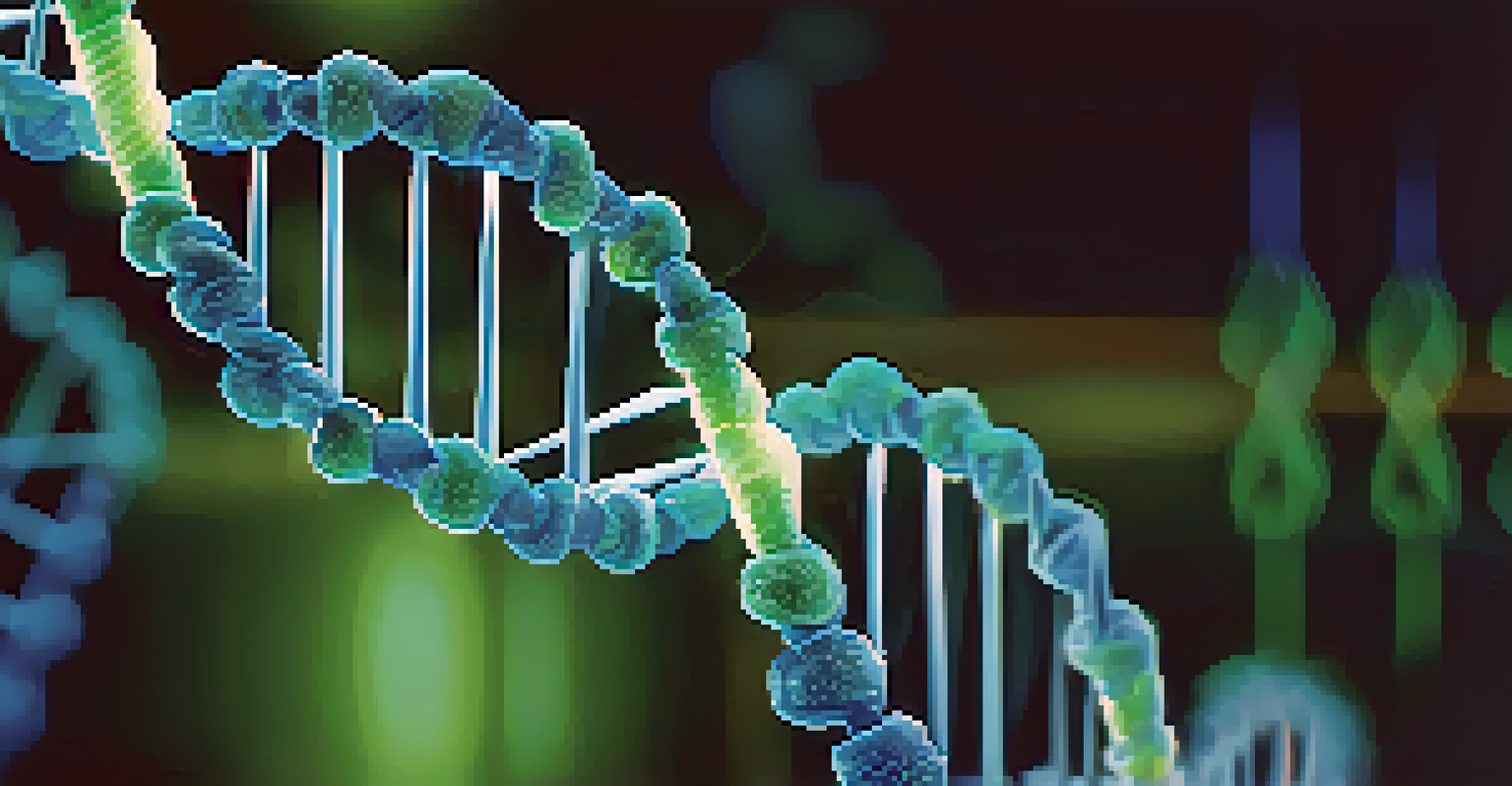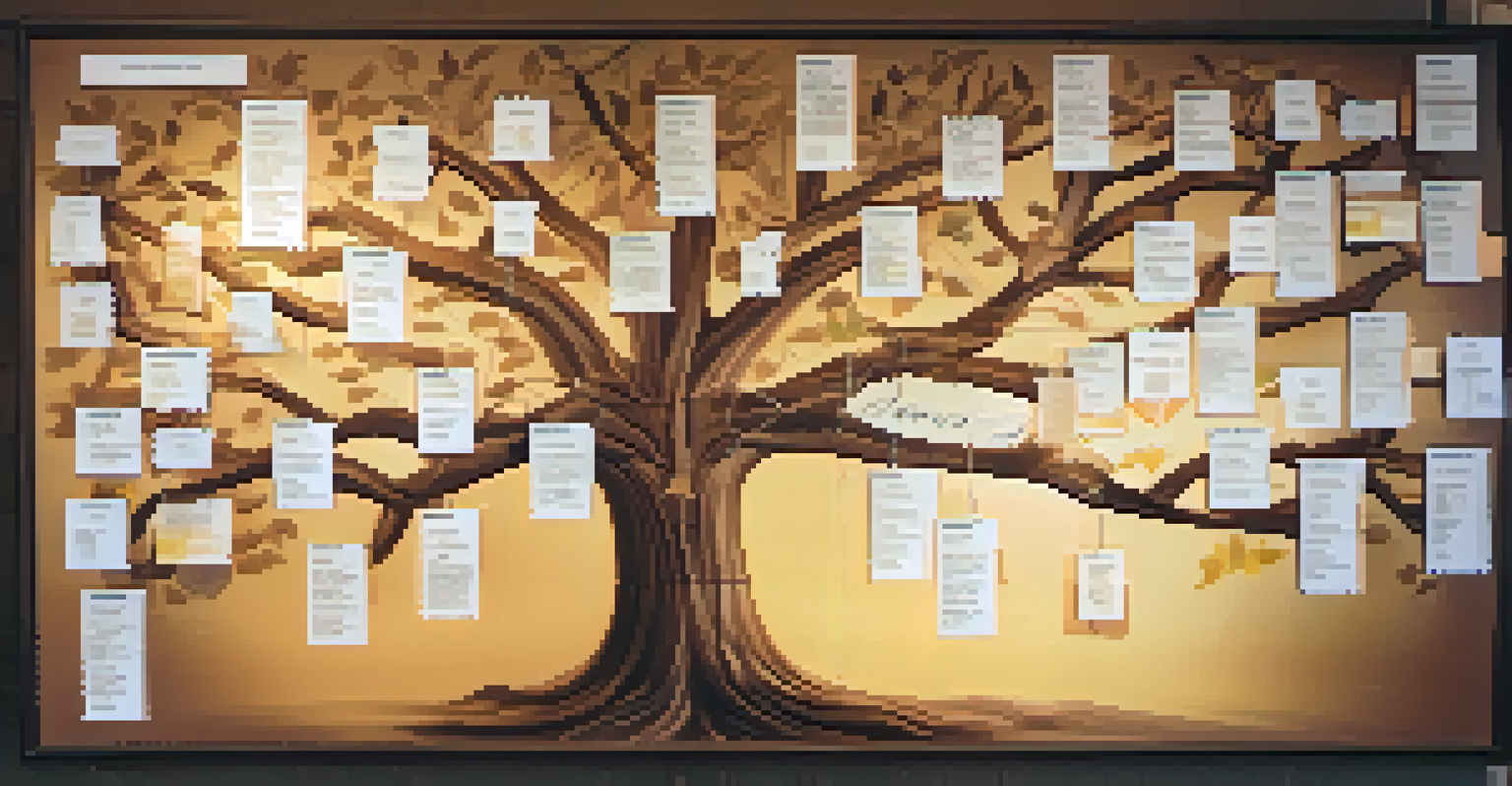Tips for Using DNA Testing to Discover Ancestry Roots

Understanding the Basics of DNA Testing for Ancestry
DNA testing for ancestry involves analyzing your genetic material to uncover your heritage. Most tests look at specific markers in your DNA that can indicate your ethnic background and geographical origins. By understanding your results, you can piece together a clearer picture of your family history.
The DNA we carry is a roadmap to our past, a guide to our ancestry.
There are several types of DNA tests available, including autosomal, Y-DNA, and mitochondrial tests. Autosomal tests analyze DNA from both parents, giving insights into your entire lineage, while Y-DNA tests focus on the male line and mitochondrial tests trace the maternal line. Knowing these differences helps you choose the right test for your ancestry research.
Before jumping in, consider what you hope to learn from the test. Are you looking to connect with distant relatives, or are you interested in specific ethnic origins? Having a clear goal will guide your testing process and help you interpret the results more effectively.
Choosing the Right DNA Testing Service
With numerous DNA testing services available, selecting the right one can feel overwhelming. Popular options include AncestryDNA, 23andMe, and MyHeritage, each offering distinct features and databases. Researching these services can help you find one that aligns with your ancestry goals.

Consider factors like the size of the database, the types of tests offered, and the level of detail in the results. A larger database may yield more potential matches, while some services provide health insights alongside ancestry information. Evaluating these aspects will enhance your experience.
Understanding DNA Testing Types
Different DNA tests like autosomal, Y-DNA, and mitochondrial offer unique insights into your ancestry.
Lastly, read customer reviews and compare pricing structures. Some companies run sales or offer bundled tests, so keep an eye out for deals that suit your budget. Making an informed decision will set you on the right path for uncovering your ancestry.
Preparing for Your DNA Test: What to Expect
Once you've chosen a testing service, it's time to prepare for your DNA test. Most companies send a kit that includes a sample collection method, usually a cheek swab or saliva tube. Follow the instructions carefully to ensure accurate results.
Each time we connect with a relative, we weave a new strand into the fabric of our family history.
Before you collect your sample, it's important to avoid eating or drinking for a certain period of time, as this can affect the quality of the sample. Additionally, make sure to register your kit online before sending it back to the lab, as this links your results to your account.
After sending your sample, be patient! Testing can take anywhere from a few weeks to a couple of months, depending on the service. Use this time to think about how you will interpret and share your findings once they arrive.
Interpreting Your DNA Results: Making Sense of the Data
Once your results are ready, they will typically show your ethnic breakdown and potential relatives. Ethnicity estimates are based on comparisons with reference populations, which means they can change as databases grow. It's essential to approach these results with an open mind, recognizing that they are estimates, not definitive answers.
Many testing services provide tools for exploring your results, such as maps that show your ancestral regions. Take advantage of these resources to visualize and better understand your heritage. This interactive experience can make your ancestry journey even more exciting.
Choosing the Right Testing Service
Researching various DNA testing services helps you select one that aligns with your ancestry goals and budget.
Don't hesitate to reach out to customer support if you're confused about your results. Many services offer guidance on how to interpret your data and can help clarify any questions you have about your ancestry.
Connecting with Potential Relatives from Your Results
One of the most rewarding aspects of DNA testing is discovering potential relatives. Most services will provide a list of DNA matches, which can range from close family members to distant cousins. Reaching out to these individuals can open up new avenues for exploring your family history.
When contacting potential relatives, keep your message friendly and straightforward. Share your results and express your interest in learning more about your shared ancestry. Many people are excited to connect and share their own family stories, leading to rich exchanges.
However, it's important to respect privacy boundaries. Not everyone may be comfortable sharing their information, and that's okay. Approach these conversations with sensitivity and an understanding that everyone has their own comfort levels regarding family history.
Utilizing Family Trees to Enhance Your Research
Building a family tree can significantly enhance your DNA results by providing a visual representation of your lineage. Many DNA testing services offer tools to create family trees, allowing you to input your relatives and visualize connections. This can help you organize your findings and identify potential areas for further research.
As you construct your family tree, consider reaching out to relatives for additional information. They may have stories, photographs, or documents that can enrich your understanding of your ancestry. Collaborating with family members can also uncover new branches of your tree that you might not have known about.
Interpreting Results and Connections
Once your DNA results arrive, utilize tools to explore your ancestry and connect with potential relatives.
Remember to verify any information you receive through traditional genealogical research methods, such as census records or birth certificates. Combining DNA results with historical data will provide a more comprehensive view of your ancestry.
Staying Open-Minded About Your Ancestral Discoveries
As you explore your ancestry through DNA testing, it’s crucial to stay open-minded about the discoveries you might make. You may uncover unexpected connections or ethnic backgrounds that challenge your assumptions. Embracing these surprises can lead to a richer understanding of your heritage.
Remember that ancestry is complex, and your family history may not fit into neat categories. It's important to approach your findings with curiosity rather than judgment. Each new piece of information contributes to the tapestry of your unique heritage.

Lastly, be prepared for the emotional aspects of uncovering your ancestry. Discovering new relatives or learning about past struggles can be impactful. Take time to reflect on your journey and how it shapes your identity.